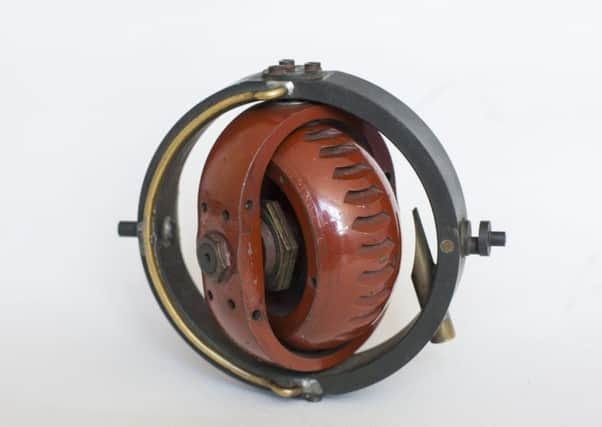Exhibit of the Week: V1 flying bomb gyroscope, Eden Camp Museum, Malton


The donated gyroscope was brought back from Germany as a ‘souvenir’ at the end of the war by Joseph Sydney Wright, who had acquired it whilst serving with the Royal Artillery. As well as the gyroscope, he also had a ‘Receipt for Surrendered Article’, issued by the Military Government of Germany, and signed by an Officer of the Luftwaffe. The receipt describes the surrendered article as ‘synchronising gear from rear of a Flying Bomb’. As Joseph came home with both a gyroscope and a receipt stating that he had handed in such a thing, it is believed that he had picked up two separate gyroscopes, surrendered one, and secretly pocketed the other.
Although it was at first thought to be a piece from a German Torpedo, research by Joseph Wright’s family, including correspondence with the Royal Navy Submarine Museum, concluded that the gyroscope was from a V1 Flying Bomb.
Advertisement
Hide AdAdvertisement
Hide AdThe V1, or Fieseler Fi 103, was the first of a series of ‘Vengeance weapons/Vergeltungswaffen’, designed for the bombing of London. V1s were 8m (26’ 3”) long, with a wingspan of 5.7m (18’ 9”) and carried a 850kg Amatol-39 warhead. The pulse jet engine, mounted above the fuselage, drew in air at the front, whilst petrol burned in a series of explosions, producing a jet of flaming exhaust gas from the tailpipe, making its infamous noise.
Due to their limited range, V1s were launched from fixed ramps at sites across the Channel on the French and Dutch coasts, but could also be air launched from modified bomber aircraft. Guided primarily by the gyroscopic automatic pilots, the fuel was cut off automatically at a predetermined range. Of 6,725 V1s that reached England, 2,420 fell on London, killing over 6,000 people, injuring nearly 18,000 and causing severe and widespread damage.
A large percentage of V1s never reached their targets and Britain had formed an effective defence. Radar controlled anti-aircraft guns shot down 1,859 flying bombs between June 1944 and March 1945. The RAF downed a total of 1,771 V1s. Only the Hawker Tempest, Spitfire Mk IX and the Gloucester Meteor had the speed to intercept the weapons. Pilots had to fire at only 180m (200yds) to be sure of a hit. Travelling at 650km/hr (400mph) they had no time to avoid the subsequent explosion and flew through the centre of a fireball. Another technique used was to fly alongside the bombs and place the aircraft’s wingtip under that of the V1 and gently raise it. This upset the Doodlebug’s gyroscopic guidance system and sent it crashing to earth.
A comprehensive display on the V1 Flying Bomb, including a full-scale replica and the gyroscope, are on permanent display at the museum.